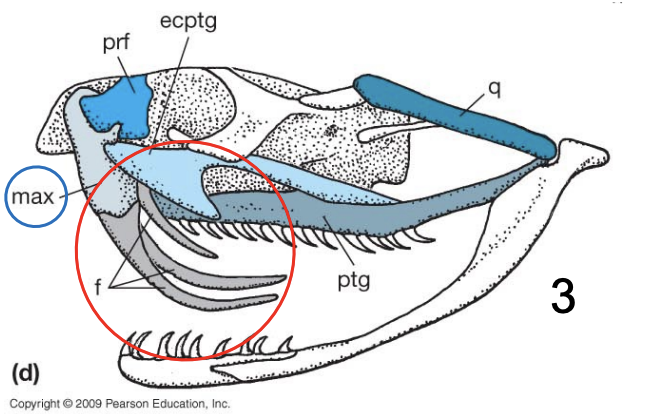Lecture 11: Lepidosaurs: Tuatara, Lizards and Snakes
1/16
There's no tags or description
Looks like no tags are added yet.
Name | Mastery | Learn | Test | Matching | Spaced |
|---|
No study sessions yet.
17 Terms
Lepidosauromorpha
Largest group of non-avian sauropsids
Divided between two subgroups:
Sphenodontidae
Squamata
Ectothermy
Rely on external sources of heat to raise their body temp
Thermoregulation in lepidosaurs
Ectotherms
Gain heat from the sun (heliothermy) via:
Directly (radiation)
Indirectly (radiation via reflection
Conduction
Convection
Lose heat through
Conduction
Convection
Evaporation
Physiological processes (e.g., vasodilation) can speed up heating or slow down cooling
Lepidosaur Characteristics
Bodies are covered in keratinous scales (derived from the epidermis) and are relatively impermeable to water
Outer layer of epidermis is shed periodically as growth occurs (cyclical shedding)
Growth is also determinate (grow ceases at a certain size) (vs indeterminate as in testudines and some other groups of tetrapods)
Transverse cloacal slit (vs. vertical slit in other sauropsids
No copulatory organ in Tuatara (plesiomorphic condition)
Paired hemipenes in squamates
Diapsid skulls
Sphenodontidae
Commonly known as Tuatara
Vulnerable status
Sister group to Squamata
Two rows of teeth in the upper jaw, creating a shearing effect when the jaw is closed
Order Squamata
Snakes and Lizards
Highly modified diapsid skull
Lack temporal bar
In snakes, the postorbital and squamosal are further reduced
Serpents
Snakes
Two major lineages:
Scolecophidia
Alethinophidia
Diversity not evenly distributed between them
Superfamily Colubroidea
Largest subgrouping of the Alethinophidia
Contains three families
Colubridae
Viperidae
Elapidae
Characteristics of Snakes
Highly modified diapsid skulls; no temporal fenestra remain
Incredibly kinetic skulls that allow extensive jaw movement
Possible due to 8 mobile joints
Lower jaw of the left and right sides are connected only by muscle and skin allowing them to spread apart and move forwards or backwards independent of each other
Skin along the ventral surface of the head is also very stretchy
Allows snakes to eat large prey
No limbs
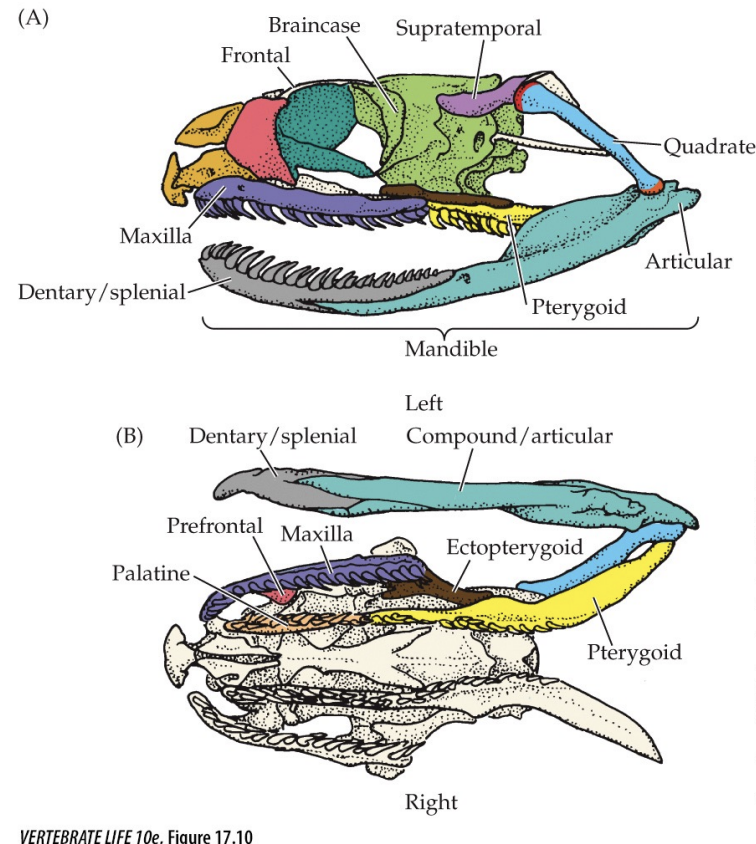
Lateral Undulation (Serpentine) movement
Body is thrown into a series of curves
Snake presses backwards at each curve causing forward movement
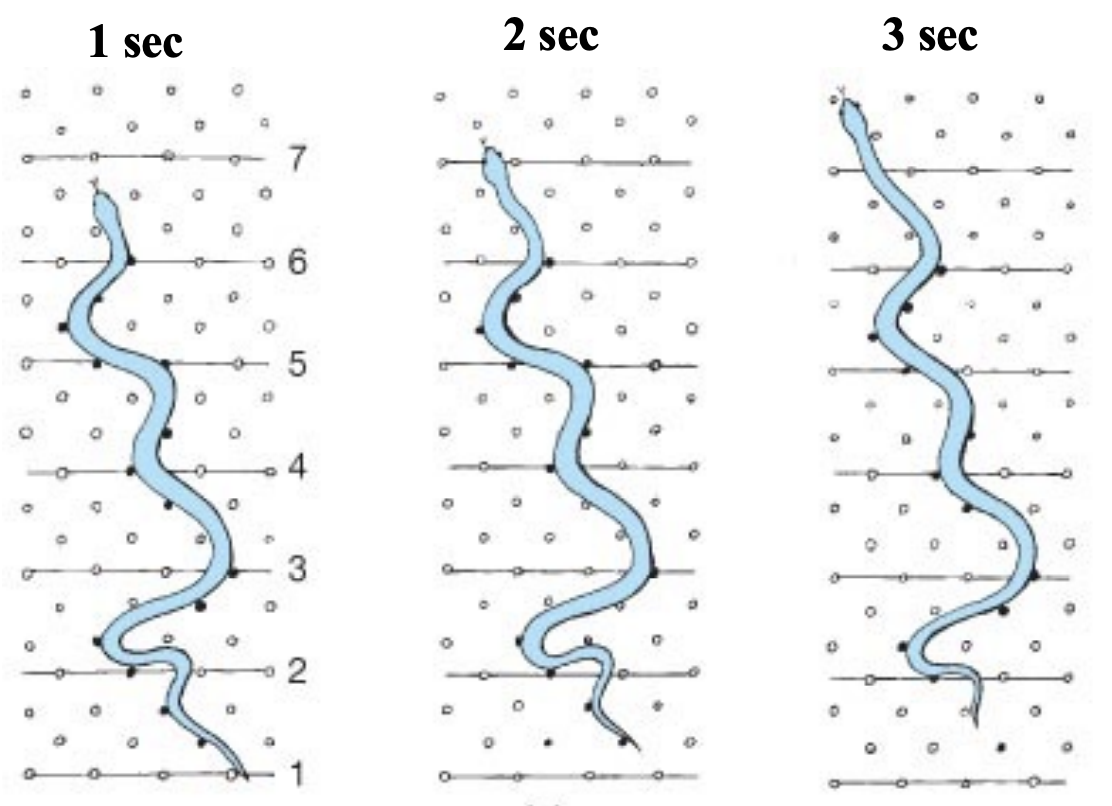
Sidewinding Movement
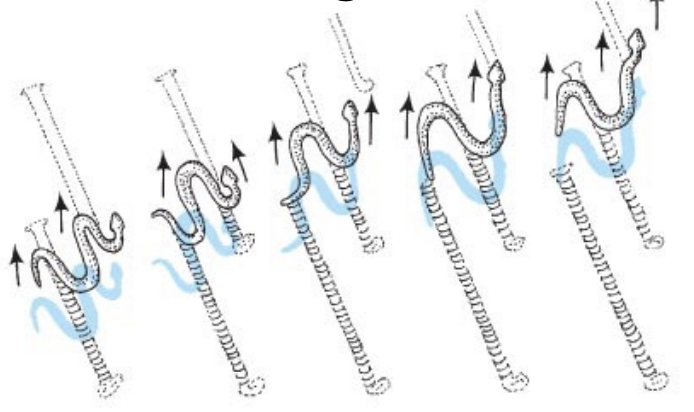
Concertina movement
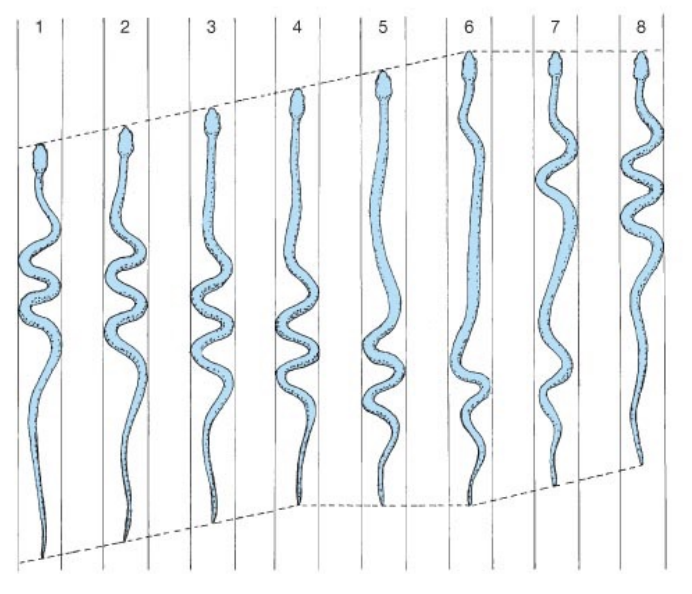
Rectilinear movement
Used predominantly by heavy-bodied snakes (e.g., Boidae)
Alternate sections of the ventral surface are lifted off the ground and pulled forward by muscles that originate on the ribs and insert on the ventral scales
Waves of contraction move from anterior to posterior and the snake moves forward
Slow but effective
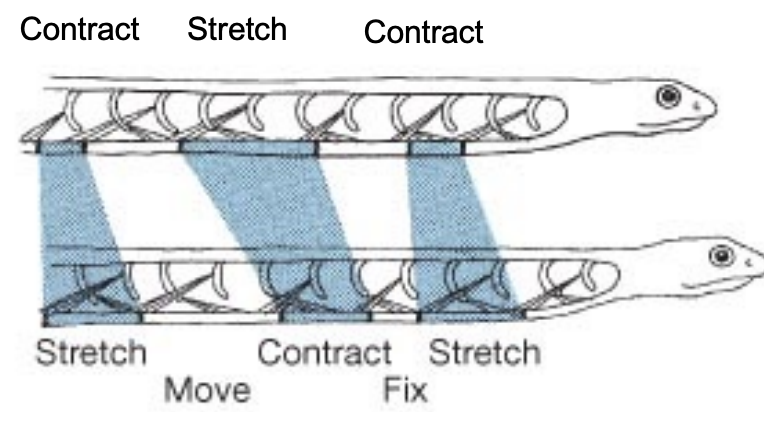
Thermal Prey Detection
Some snakes detect prey by thermal cues
Opisthoglyphous snakes
Snakes have one or more small hollow fangs near the rear of the max (Colubridae) - so-called rear-fanged snakes
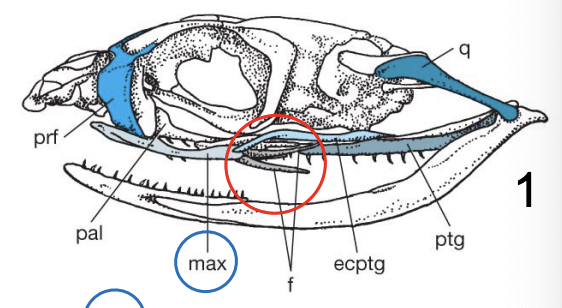
Proteroglyphous snakes
Hollow fangs located at the front of the max that are permanently erect (Elapidae)
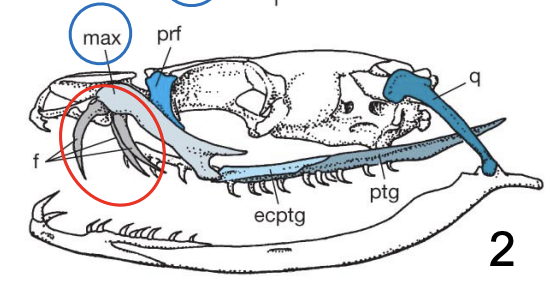
Solenoglyphous snakes
The hollow fangs are the only teeth on the max; mobile, can be erected (when mouth open) or folded (when mouth closed) (Viperidae)
